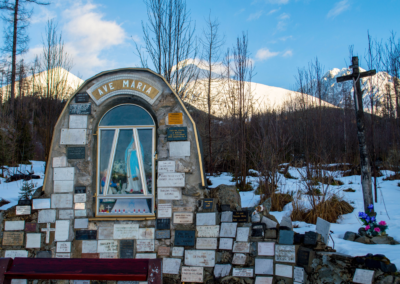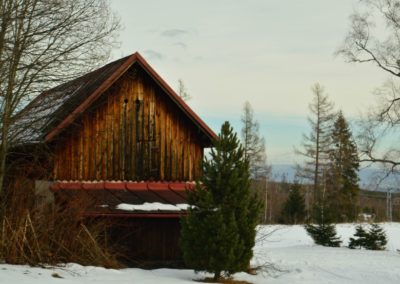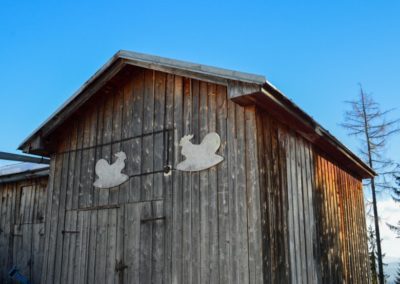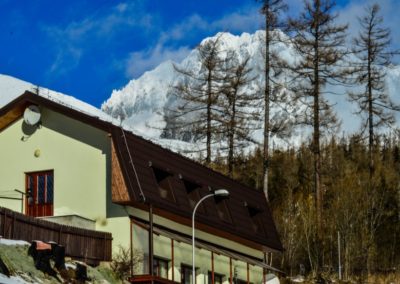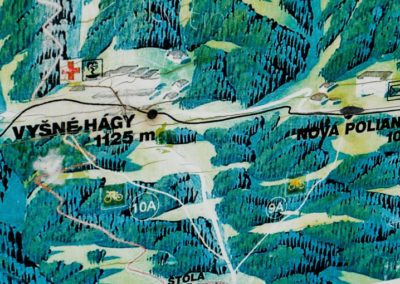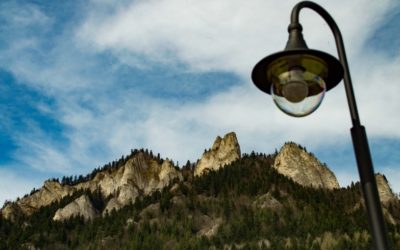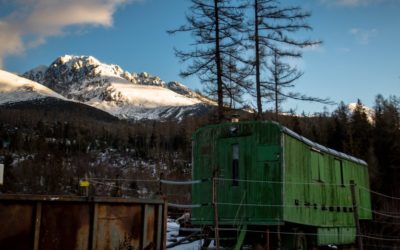A few days ago, I discovered that Štôla is within the boundaries of Tatra National Park and has trails leading into the mountains. I have hiked every day since, a habit I plan to keep despite the wintry season. Even though school picks up again tomorrow, I want to continue and explore as much as time allows. How can I not when the peaks gaze at me through the kitchen window as I eat breakfast every morning?

For me, there is no better way to hike than alone. Not to sound too reclusive, but people only draw your attention away from your surroundings and their speech silences nature’s song. Fortunately for me, there is no better time or place to hike in solitude than between small Tatra villages in the month of January, when the hills are deep with snow and every path covered in solid ice.
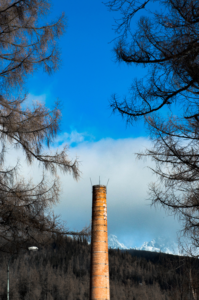 The photos are from my first solo trip upwards. I began in Štôla and followed my street northwards to the edge of the village. There, three paths diverge. One leading to Nová Polianka, another to Vyšné Hágy, and the third (as of yet unexplored) ultimately leads to Štrbské Pleso, quite a long walk. I took the first and would return down the second after a tram ride between the two towns.
The photos are from my first solo trip upwards. I began in Štôla and followed my street northwards to the edge of the village. There, three paths diverge. One leading to Nová Polianka, another to Vyšné Hágy, and the third (as of yet unexplored) ultimately leads to Štrbské Pleso, quite a long walk. I took the first and would return down the second after a tram ride between the two towns.
Many villages and a few small towns dot the lower reaches of the High Tatras. Though, they are all in fact part of one large city: Vysoké Tatry (literally just “High Tatras”). The city is home to less than 5,000 people, yet in square miles it rivals much larger cities. It is—technically—Slovakia’s largest “urban” area, though calling it such is far too generous. The vast majority of the city’s land is national park and its population density is a mere 34 people per square mile.
Neither Nová Polianka nor Vyšné Hágy are very large or, honestly, have much to do. They are mostly residential areas and, surprisingly, not high end ones. I would think more people would want to live among the Tatras. Despite their emptiness, I committed to exploring every street that I could, with the purpose of discovering even the smallest details.

In Nová Polianka, a foreboding building gazes from its mountain perch. It is fairly ill-kept and the grounds seemed unattended. If my host father is to be believed, it is an abandoned hospital. Yet, to me it seemed suspiciously not abandoned. Regardless of its use or disuse, it certainly once cared the sick and injured. I’m positive many a wounded mountaineer visited its halls. Yet, in contrast to the hope and healing hospitals provide, a forlorn statue stands centered behind the structure. I wonder what the story of this piece is, sitting unnamed, unexplained, and weather-worn behind an abandoned hospital in a small alpine village?
More from Andrew:


